The Forgotten who Helped Forge a Nation
Showcasing the African, Indigenous, & Female Patriots of the American Revolution.

The living experiment of democracy known as the United States of America and it's baptism of fire, known as the "American Revolution", contines to live on in the minds and hearts of millions acorss America and the world. However, the historical narratives of the revolution and subsequent infancy of a nation are only beggining to transform as new generations are given the responsibility from the old to carry on the legacy of such notable people as George Washington, Thomas Jefferson, Samuel Adams, Benjamin Franklin, and Alexander Hamilton. Yet this select few of people are, in reality, only the surface of much greater narratives which encompasses the story of America's creation. Stories and participants of the revolution, which have lived under the collossus-esc shadows of the "Founders". What of the African Americans which fought alongside their white bretheren on the field of battle? What of the women and native tribespeople? what did they stand to gain or lose through this conflict?
Through this article, I would like to shine a light on "the others" whose stories have been long lost to the historical record and schoolroom textbooks & only in recent years have they begun to recieve their due. These are the forgotten who helped forge a nation.
1) Prince Estabrook
- Born in 1741.
- An enslaved man, to Benjamin Estabrook.
- Enlisted as a private in the Massachusetts Militia under Captain John Parker, & activly engaged the British forces on Lexington Green (April 19, 1775).
- Wounded in the Battle of Lexington, yet survived to continue service in the patriot cause, on and off, until 1783.
- Emancipated by Benjamin Estabrook, following the end of the war.
- Died in 1830.

2) Salem Poor
- Born into slavery, in 1748, in Andover, Massachusetts.
- Owned by John Poor & John Poor Jr.
- Purchased his freedom from John Poor Jr., for £27, in 1769.
- Enlisted as a private in the Massachusetts militia, in 1775, serving under Captain Benjamin Ames.
- Fought in the Battle of Bunker Hill, where he is credited with shooting down British Lieutenant Colonel James Abercrombie.
- Transferred to the 13th Massachusetts Regiment, under Captain Nathaniel Alexander.
- Fought in the Battle of White Plains, in 1776.
- Encamped at Valley Forge, between December of 1777 & June of 1778.
- Discharged from Continental service in 1780.
- Died in 1802.

3) Peter Salem
- Born into slavery in 1750, in Farmingham, Massachusetts.
- Sold from his fromer master, Jeremiah Belknap, to Lawson Buckminster.
- Upon Buckminster's comission as a Major in the Continental Army, Peter was emancipated by him, In 1775.
- Enlisted as a private in the militia under Captain Simon Edgell, & fought at the Battle of Concord.
- Transferred to the 6th Massachusetts Regiment of the Continental Army, under Colonel John Nixon.
- Fought in the Battle of Bunker Hill, & is credited with shooting down British Major John Pitcairn.
- Transferred, again, to the 4th Continental Regiment, in 1776.
- Transferred back to the 6th Massachusetts Regiment.
- Fought in the Battle of Saratoga.
- Fought in the Battle of Stony Point.
- Honorably discharged in 1779.
- Worked as a cane weaver until his death in 1816.
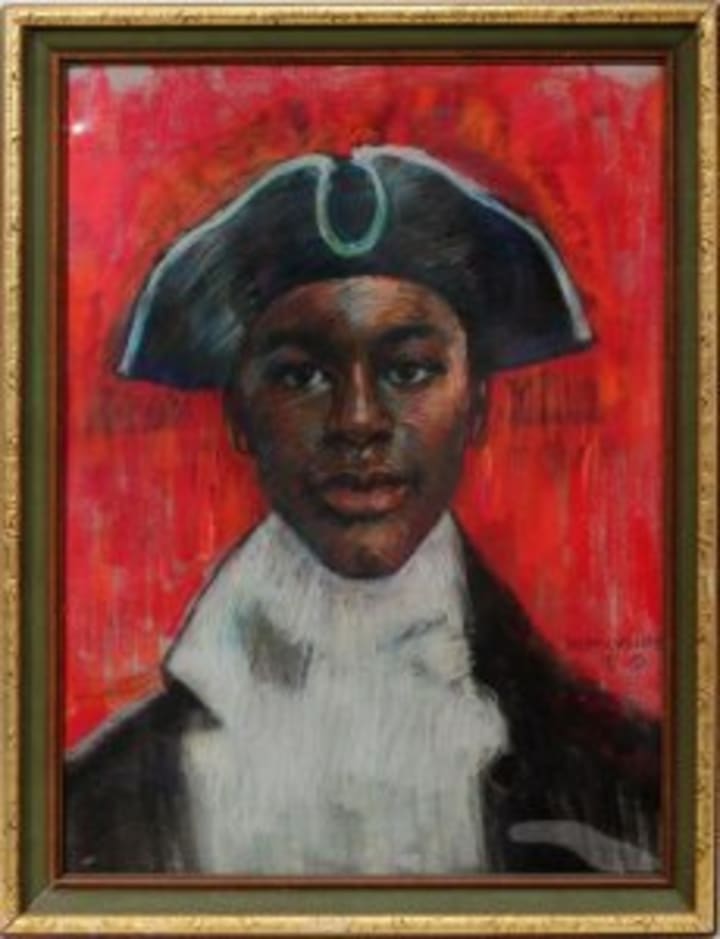
4) William Lee
- Born around 1750, in Virginia.
- Purchased as a slave, in 1768, by George Washington for £67 & 15 shillings.
- Served at Mount Vernon as Washington's personal valet; tasked with personal care tasks, as well as accompanying him everywehere he went.
- Attended the First Contiental Congress, alongside Washington, in 1774.
- Served throught the American Revolution as Washington's aide & bodyguard (both in camp & in battle).
- Emancipated as decreed in George Washington's will, in 1799, & granted a pension of $30 a year for the rest of his life.
- Died living as a free man at Mount Vernon, in 1832.
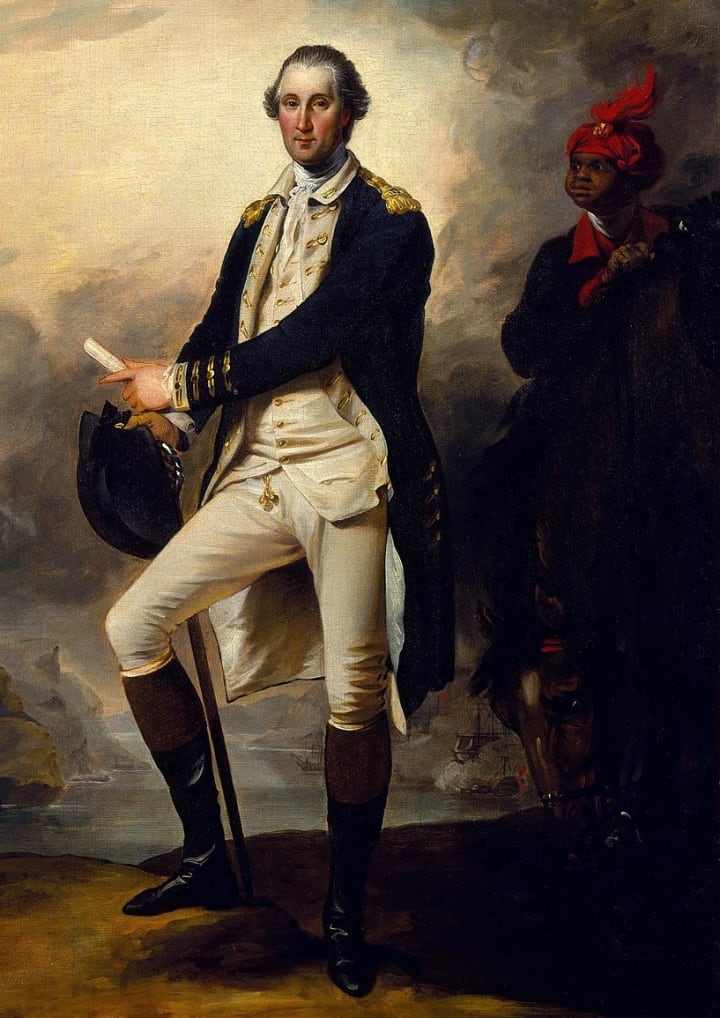
5) Jack Sisson
- Born around 1743.
- Recorded as a slave to Thomas Sisson, in Rhode Island prior to the outbreak of the Revolution.
- Escaped from Thomas Sisson's estate in 1777 to fight for the patriot cause.
- Volunteered in the Rhode Island Militia, under Major William Barton.
- Participated in a night raid to capture British Brigadier General Richard Prescott (as part of a P.O.W. transfer to rescue Major General Charles Lee).
- Enslisted in the Continental Army, as a private, in the 1st Rhode Island Regiment (consisting of all black soldiers), commanded by Colonel Christopher Greene.
- Fought in the Battle of Red Bank, in October of 1777.
- Fought in the Battle of Rhode Island in August of 1778.
- Fought in the Siege of Yorktown in October of 1781.
- Honorably discharged from military service & emancipated in June of 1783.
- Died in 1821.

7) James Armistead Lafayette
- Born in 1748 in Virginia.
- Worked as an enslaved man to William Armistead.
- Volunteered with the Continental Army in 1781, amidst the Yorktown Campaign.
- Tasked by Major General Marquis de Lafayette as an espionage agent (a spy) to infiltrate the British garrison in Richmond, commanded by Brgidier General Benedict Arnold.
- Following Arnold's transfer to British occupied New York, Armistead carried on his spy work; infiltrating the camp of Lord Charles Cornwallis, and relaying vital information to the Continental lines (helping them secure victory at Yorktown).
- Honorably discharged from military service in 1783, yet remained the property of William Armistead, until a petition to the state of Vriginia, in 1787, granted him emancipation; as well as a $40 annual pension for his patriotic service.
- Changed his surname to Lafayette, following his freedom, in honor of his commanding officer in the Revolution.
- Reunited with the Marquis in during his tour of America in 1824.
- Died sometime between 1830 & 1832.
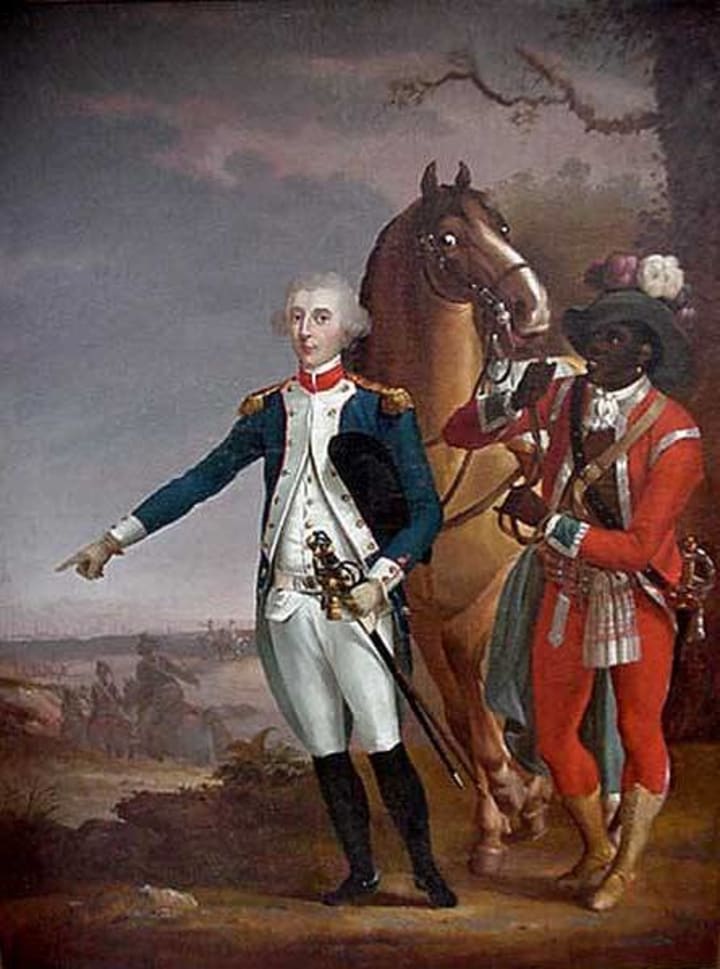
8) Margaret Corbin
- Born Margaret Cochrane, in 1751, in Pennsylvania.
- Married Virginia farmer, John Corbin, in 1772.
- Followed her husband into the Continental Army (who had enlisted in Captain Thomas Proctor’s 1st Company of Pennsylvania Artillery) in 1775.
- Stationed together at Fort Washington (New York).
- During the Battle of Fort Washington (in November of 1776) John was killed by enemy gunfire, leaving his cannon unmanned. Margaret immediately took her fallen husband's place at the cannon, continuing to fire until she was wounded by three musket balls.
- Surrendered to British soldiers following the capture of the fort & later released on parole.
- Sympathetic to her heroism on the battlefield, the state of Pennsylvania provided her $30 financial aid; and the Continental Congress granted the crippled Margaret an annual military pension of $3 a month, in 1779.
- Enrolled with the Corps of Invalids (under the command of Capt. John Reiley) in 1781, & served as a guard at the West Point Garrison in New York.
- Discharged in 1783.
- Died in New York, in 1800.

9) Deborah Sampson
- Born in December, 1760, in Massachusetts.
- Lived and worked as an indentured servant for several Massachusetts families & households, between 1770 & 1778 (learning to read & write in the process).
- Enlisted in the Continental Army (disguised as a man) in 1782, under the alias of "Robert Shirtliff"; serving as a private in the 4th Massachusetts Regiment, under the command of Captain George Webb .
- Particpated in several skirmishes against British regulars & loyalist miltias between May & July of 1782 (until sustaining two musket balls in her thigh & a sword wound on her forehead).
- Sampson would contunie her service until the summer of '83, when an army doctor (Barnabas Binney) discovered her true identity.
- Rather than having her repremanded, Major General John Paterson honrably discharged her in September of '83.
- Lived out the remainder of her life in peace, occasionally lecturing audiences about her military service, and was granted an annual pension of $76, in 1816.
- Died of yellow fever in 1827, in Massachusetts.
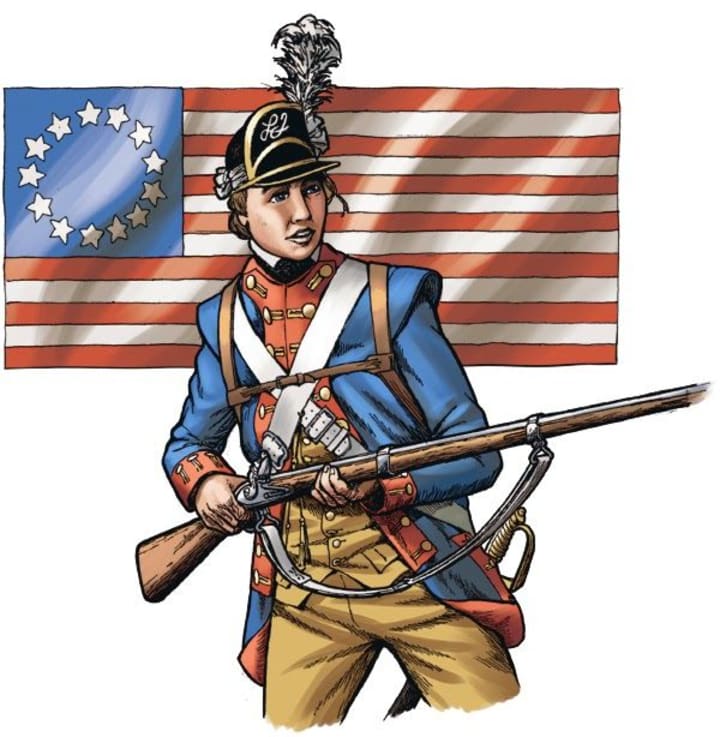
10) Mary Hays
- Born Mary Ludwig in New Jersey, in 1744.
- Married William Hays in 1777.
- William Hays enlisted in the 4th Pennsylvania Artillery, the same year; obliging Mary to join her husband at the Continental Army's winter camp at Valley Forge, Pennsylvania.
- During the Battle of Monmouth, William had collapsed (either from a battle wound or heat exhaustion) and was escorted off the battlefield. In the mist of finding a replacement to fill in her husbands position on the cannon crew, Mary volunteered to take over for him; loading the cannon as the artillery suppressed the British advance on the Continental line.
- After declaring victory at Monmouth, General Washington commemorated her courage in the heat of battle, and awarded her the rank of sergeant in the Continental Army.
- Mary & William were discharged from the military in 1783 & settled in Pennsylvania.
- Mary would live on an annual pension of $40 for her service, and died in 1832.

11) Anna Maria Lane
- Belived to be born in New Hampsire, around 1775.
- Married John Lane in 1776.
- (Disguised as a man) Anna & John enlisted together as privates in the Continental Army in '76; fighting together in the Battle of Germantown (October, 1777) & the Siege of Savannah (September 1779).
- Both were discharged in 1781.
- Settled down, together, in Virginia; with John working at a state aresenel, & Anna working as a nurse at a military hospital (with an annual pension of $100 for her service).
- Died in June of 1810.

12) Joseph Louis Cook (Akiatonharéhkwen)
- Unknown date of birth.
- Born to an Abenaki family, but was adopted & assimilated into the Mohawk tribe as a young man.
- Sided with the French against the British during the Seven Years War (fighting in the Battle of the Manongahela, the Battle of Fort Oswego, the Battle of Carillon, & the Battle of Sainte Foy), between 1755 & 1761.
- Formally sided with the Patriot forces in 1775, offering his services to General Washington.
- Fought in the Revolution alongside a band of Onieda warriors; with the rank of Lieutenant Colonel (the Siege of Quebec, the Battle of Oriskany, the Battle of Saratoga, & the Battle of Johnston) between 1776 & 1781.
- Following the war, Cook settled in New York, working as an adivser for the Onieda Nation, and a land negotiator for the United States.
- Died in 1814, at a witness to the Battle of Lundy's Lane, in the War of 1812.
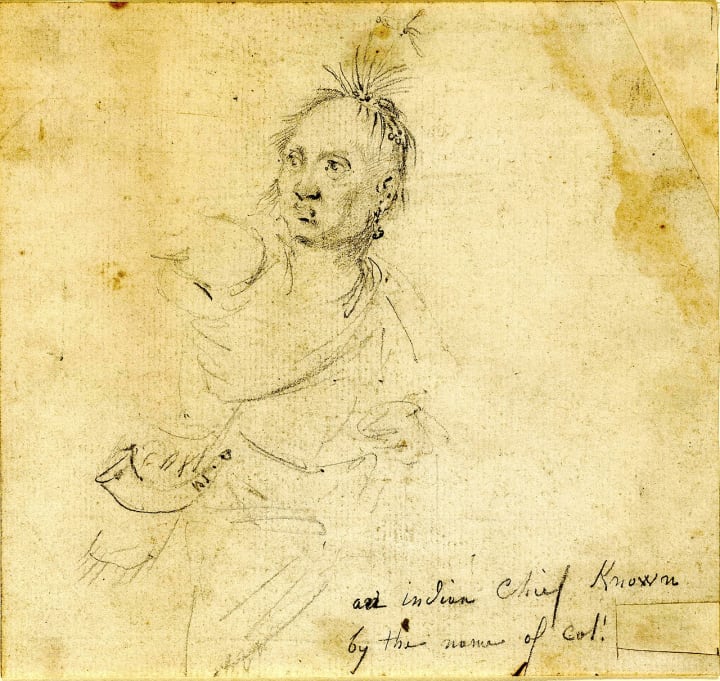
13) Daniel Ninham & Abraham Ninham
- Father & son, born in 1726 & 1745.
- Tribal Leaders of the Wappinger Nation.
- Daniel served alongside Rogers' Rangers (A British partisan militia) during the Seven Years War.
- Abraham was appointed a captain of the Stockbridge Milita by General Washington.
- Both killed in action during the Battle of Kingsbridge Cortlandt Ridge (1778) by Loyalist cavalry under Lieutenant Colonel John Graves Simcoe.

15) Hendrick Aupaumut
- Born circa 1757 in Massachusetts.
- Mohican tribesman & diplomat.
- Enlisted in the Stockbridge Milita as a captain and fought in the Battle of Orsikany, as well as the Battle of Saratoga.
- Following the end of the war, Aupaumut moved westward to avoid increasing tension with American settlers, until relocating to modern day, Wisconsin.
- Died circa 1830.

16) John Skenandoa
- Born in/around 1706.
- Chief of the Onieda Nation
- Supported the British during the Seven Years War.
- Formally sided with the Continentals during the American Revolution; providing essential food to General George Washington and his army during their winter at Valley Forge in 1777 & '78, as well as leading a warband of 250 Onieda & Tuscarora warriors in support of the patriot cause.
- Awarded a silver-engraved peace pipe by the State of New York for his contributions to America.
- Died in March of 1816.

About the Creator
Jacob Herr
Born & raised in the American heartland, Jacob Herr graduated from Butler University with a dual degree in theatre & history. He is a rough, tumble, and humble artist, known to write about a little bit of everything.






Comments
There are no comments for this story
Be the first to respond and start the conversation.